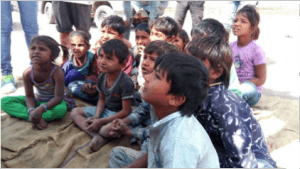As we move to a more digitally-connected world, the need for Internet access has never been greater. In many parts of the world, the Internet has firmly established itself as a core part of everyday life – and this holds true for everyone from kids to adults to senior citizens. Yet, there remain communities and places around the world that are still offline. In some instances, these are probably the hardest locations to connect. And there are many reasons for this – geography and terrain could be one reason, commercial viability of service provision is another, as is affordability – the capacity of the community to pay for devices and Internet connectivity.
In 2010, the Internet Society Asia-Pacific Bureau launched the award-winning Wireless for Communities Programme. This was a pioneering effort that placed the local community front and centre, with its catchphrase – “for the community, with the community, by the community”.
The focus of the programme is to provide Internet access and connectivity to underserved and unserved rural areas in a holistic manner that leads to socioeconomic empowerment. A key component involves developing communities’ capacity to build and operate the wireless network, and at the same time, empowering them to create and use digital services. With this foundation, many have proceeded to establish successful digital micro-enterprises. Today, the programme’s efforts have become global with our Community Networks Campaign and is making a difference around the world.
In India alone, there are over 120 networks that we have either directly worked on, or that have been inspired by us. Some of these are relatively large networks – one spans over a 100km area.
 The most recent project we have directly worked on is located in the Little Rann of Kutch in Gujarat, India, a seasonal salt marsh located in the Thar desert. For centuries, this area has been home to the Agariyas – an unrecognised minority community for whom the only means of livelihood is salt production. They brave intense heat and harsh conditions to produce a large part of India’s salt, but live in poverty as a result.
The most recent project we have directly worked on is located in the Little Rann of Kutch in Gujarat, India, a seasonal salt marsh located in the Thar desert. For centuries, this area has been home to the Agariyas – an unrecognised minority community for whom the only means of livelihood is salt production. They brave intense heat and harsh conditions to produce a large part of India’s salt, but live in poverty as a result.
During the monsoon months that last for four months, the area is submerged in sea water. But as the water recedes, salt harvesting begins. For eight months of the year during the salt-mining season, the Agariyas live in makeshift homes made out of rugs and plastic sheets, beside their salt flats. Children also live and school under similar conditions.
Due to the makeshift nature of their life, the Agariyas have little in terms of infrastructure – in fact to this day, they rely on flashing mirrors to communicate with nearby groups.
 As the Agariyas are unrecognised in government surveys, they are unable to take advantage of schemes and initiatives for minority communities. Moreover, the future of their only livelihood is uncertain as the area has been designated a Sanctuary for the Indian Wild Ass.
As the Agariyas are unrecognised in government surveys, they are unable to take advantage of schemes and initiatives for minority communities. Moreover, the future of their only livelihood is uncertain as the area has been designated a Sanctuary for the Indian Wild Ass.
In 2017, with our long-term partner, the Digital Empowerment Foundation, and a local NGO, Agariya Heet Rakshak Manch, we set about to provide connectivity and digital access to this community and named the project Zero Connect: Wireless Agariyas.
After looking into various options, we decided the best approach was to outfit a small van with equipment that would go around the various community groups and schools to provide the access they needed. We also had to improvise a steerable dish antenna to connect to the backhaul links, and how we went about that is a story in itself. Suffice to say, frugal innovation and a whole lot of creative engineering came into play!
The project had many challenges – from an unforgiving terrain with 50° Celsius days to desert winds to no electricity grid to no telecom infrastructure (hence the name Zero Connect) – and of course high salt content in the air. In the end, we have made a difference to this community and gone some way to bringing them into the digital age.
I leave you with this short video that explains what we did and what we achieved, which include improving children’s digital literacy, digitally mapping the Agariyas community in order to seek government assistance, and linking the salt-farming community to digital markets.
Projects like this again demonstrate that the Internet, and access to digital services, can make a real difference to communities, and go some way into providing socioeconomic empowerment and development. We see the greatest impact when we work with such communities and not only bring them into the digital age, but democratise their access to information and basic services most take for granted today. But most of all, we are also able to give them a voice, and the opportunity to be recognised and valued as part of our global digital community.
Learn more about community networks and let’s work together to #SwitchItOn.
Photo credit: Digital Empowerment Foundation

